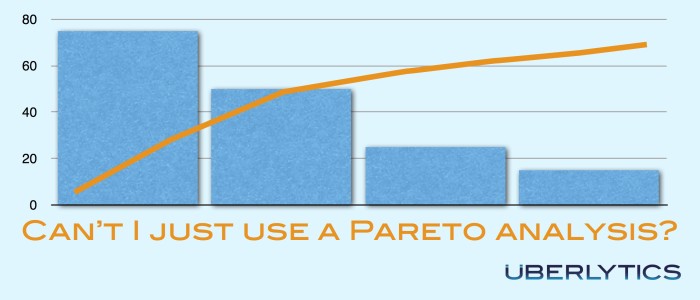When it comes to setting priorities for reliability a Pareto analysis is a very good tool for identifying assets and activities that are consuming too much time and too many maintenance resources. But a Pareto analysis does not tell you if those bad actors are actually critical to your operation.
A Pareto analysis also only evaluates frequency of activity, and does not evaluate against multiple levels of severity in multiple consequences, and will not identify risk in areas of safety, environmental, regulatory, or contractual obligations and commercial terms.
Finally, a Pareto analysis only evaluates lagging indicators – things that have already broken down or required earlier intervention. Critical items that do not have a history of frequent failure or intervention will be overlooked.
For example, you could have a ventilation system that keeps breaking down. Your Pareto analysis will show that you are spending too much time and money fixing this system. This is good from a resource analysis view. However, in the bigger picture of your operation, the consequence of this asset failing is actually minor and has minimal impact on meeting the objectives. The actual criticality of this system influences your decisions about what changes you will make and how you will treat this system.
Another example: At a water conditioning operation we evaluated, a lot of time was spent nursing some expensive and important mid-process holding tanks along until such time as they could replace or refurbish them. However, a pump system that had almost no work orders associated with it turned out to be the most critical system in the facility, and a pipe vent connection to the customer in a sensitive environmental area was the second most critical item in the facility, and it had never had more than a yearly inspection attached to it. The significance of these critical systems and assets would be missed by a Pareto analysis.
So, a Pareto analysis can be useful, but not for identifying critical assets and systems.


Comments are closed.